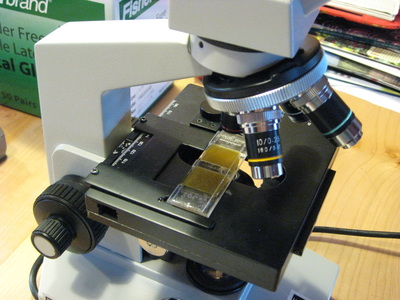Today I worked on fecal worm counts, and usually we find stongyles, and stongyles only...
Today was different, not a single stongye, but a lone cute little bugger...
It turned out to be a RED WORM.
With my little camera I can actually take a picture trough the microscope...yes..this is not the moon!
Cyathostomins are the most common equine intestinal parasite. As the horse grazes it swallows the larvae of the small redworms, which are found on blades of grass in contaminated pastures. The larvae colonise the lining of the large intestine where they develop into adults. The eggs laid by the adult worms are passed onto pastures with the animals droppings and develop into larvae, completing the worms life cycle.
Larvae picked up in the autumn can go into hibernation in cysts in the intestine wall. These 'encysted larvae' can survive in this state for a considerable length of time, developing into adult worms when the conditions become right for them, typically in the spring.
They are fairly resistant to most wormers whilst in this 'hibernating' state. It is the emergence from the bowel wall of large numbers of encysted larvae that can result in severe diarrhea and weight loss - a disease known as cyathostominosis.











 RSS Feed
RSS Feed